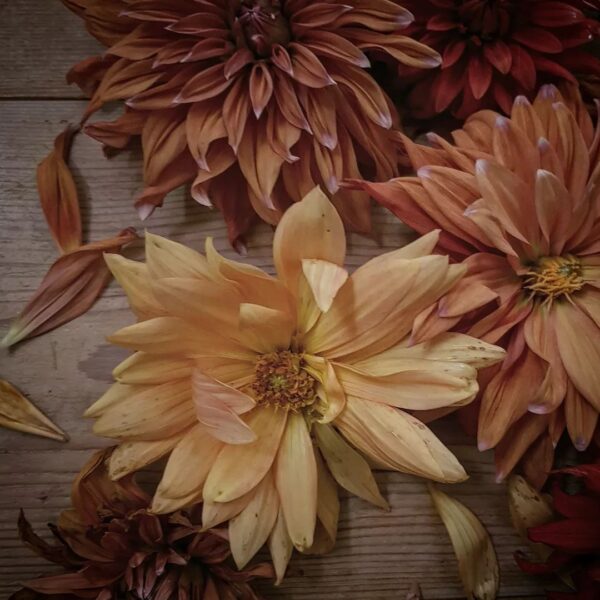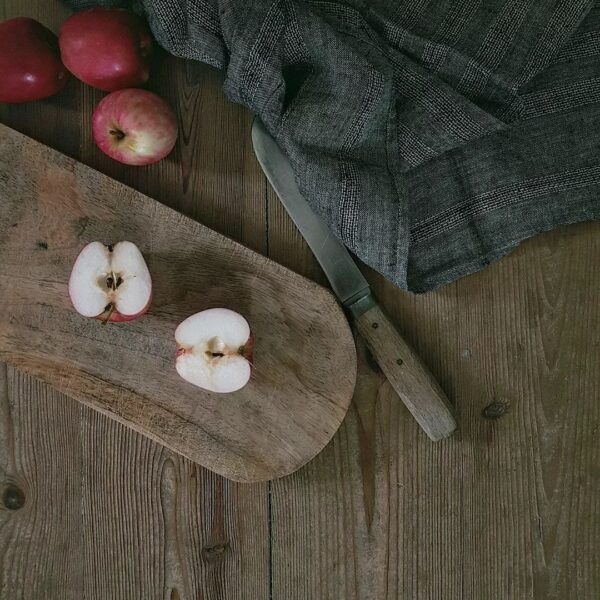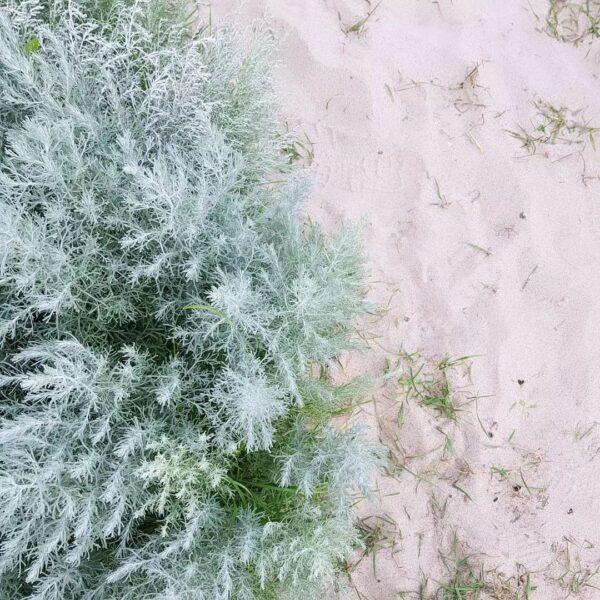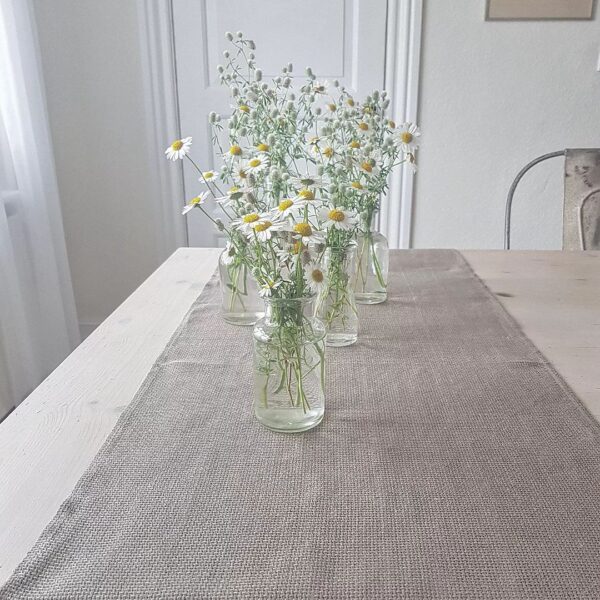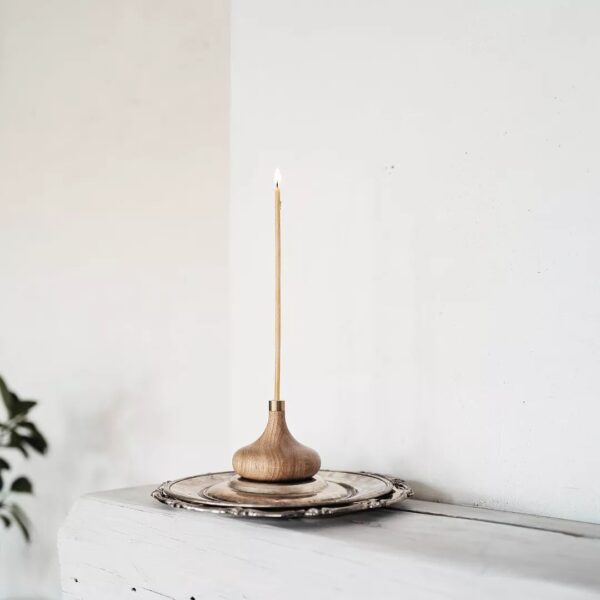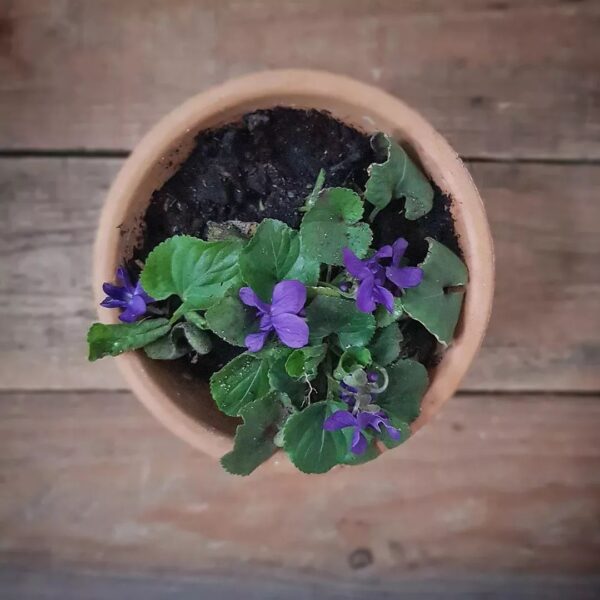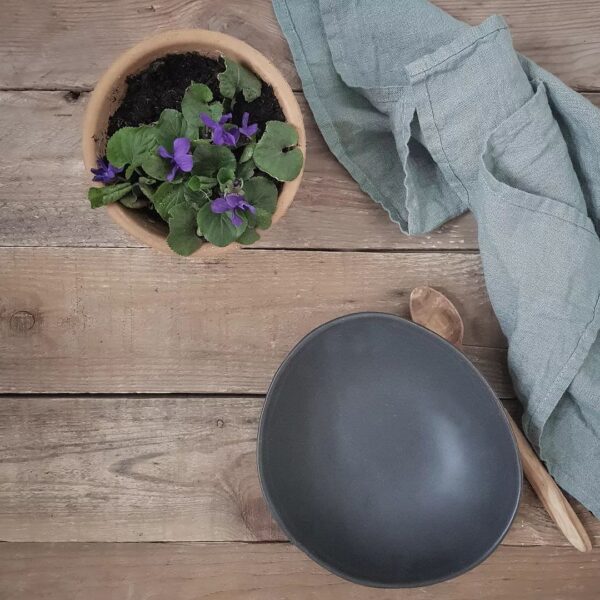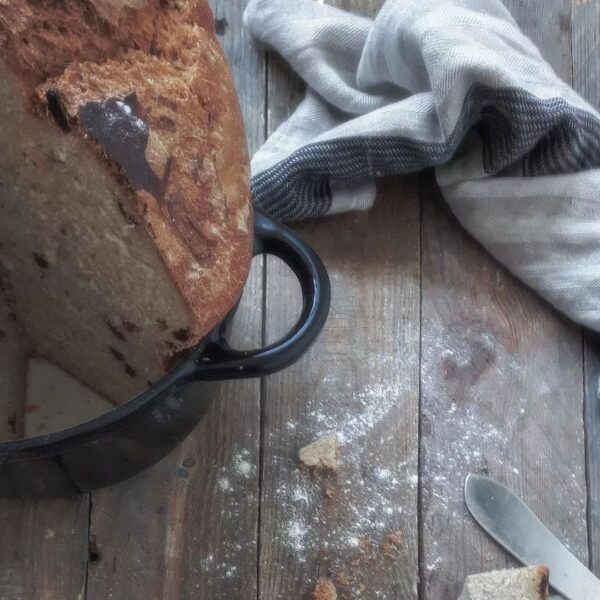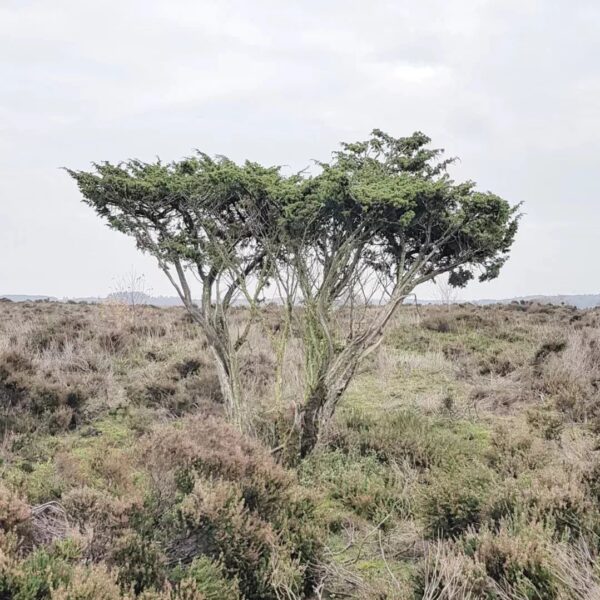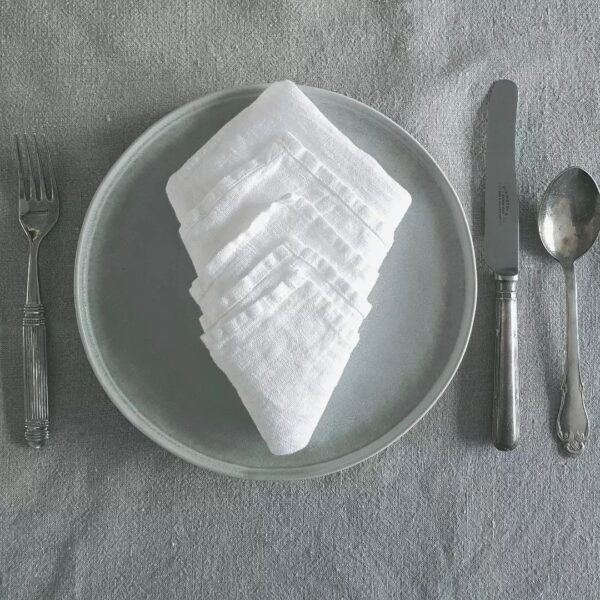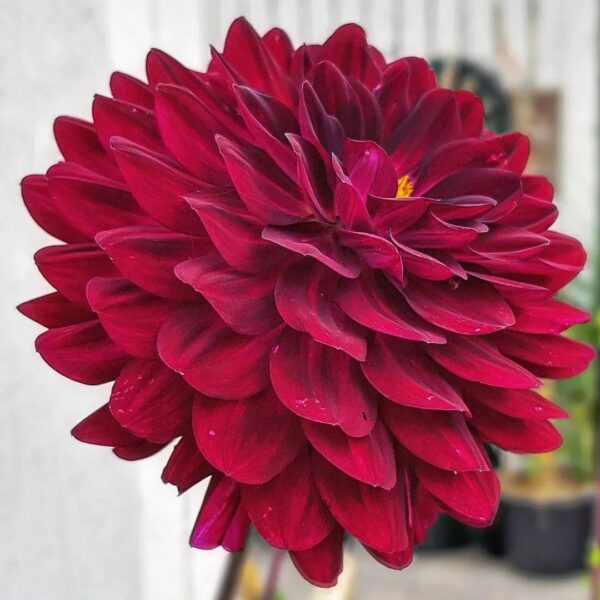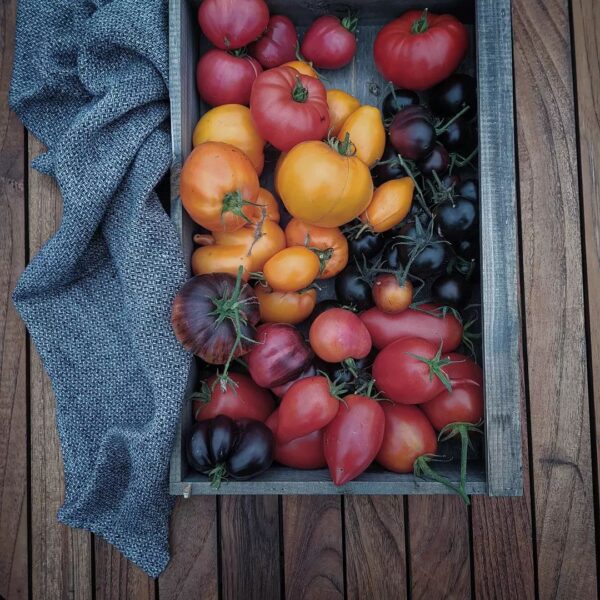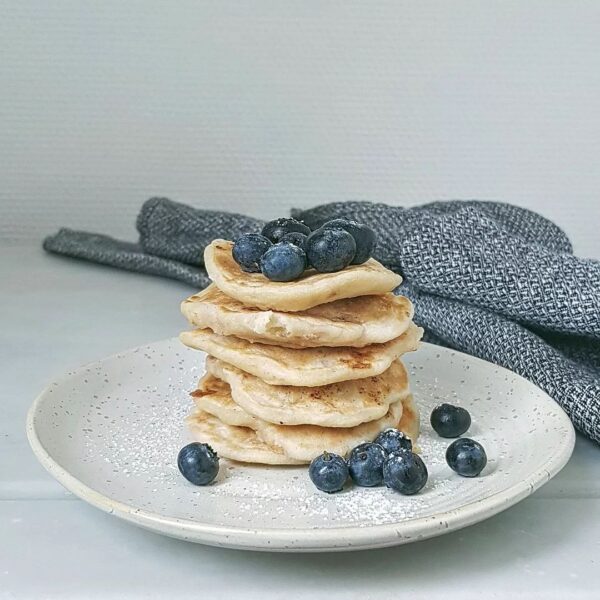about linen
Linen is the most amazing fabric that gives a feeling of comfort and wellness when touching it. It is so simple and at the same time it has so many amazing natural abilities that it is nature itself … It has been a symbol of purity. It has been used for generations for clothes, bed linen, towels and tablecloths. It has been loved by kings and priests and it has been a faithful companion of the poor. It was featured in old books and poems. But one thing is for sure – once you’ve tried it, you’re in danger of loving it for the rest of your life ….
THE HISTORY
Linen textiles are some of the oldest textiles in the world. Many researchers believe that linen is one of the first fabric ever made. The earliest documented registration of the linen industry is 4000 years old and originates from Egypt. But in ancient Egypt only the elite of society could afford to have linen. The entire linen manufacturing process was very labor intensive and could extend over 250 days from the sowing of seeds to the finished woven fabric. Therefore linen was very expensive and not affordable to everyone. But it was highly loved by kings, nobles and priests, and was diligently used both for clothes and for the bed linen.
Although significant progress has been made in the mechanization of agriculture since ancient Egypt, a large part of flax plants still are harvest manually by pulling the flax plant from the soil with the entire root system. Only in this way the highest quality of flax fiber can be ensured. Manual harvesting and fairly difficult weaving of linen yarn results in significantly higher price of linen in comparing with cotton.
Linen had a high value in ancient Egypt. Not only due to it was difficult to afford. Linen is durable, lightweight and has a very good ventilation and thermal regulation. That’s why it was a highly prefered material for the clothes in the burning desert heat. Linen has also a natural ability to withstand growth of microbes and bacteria, therefore it was considered to be pure and proper for the clothes of priests.
Linen is a textile made out of flax plant. The optimal climate for flax cultivation is a cooler climate with a high humidity, so it was obvious that its cultivation has spread to the northern countries of Europe (in the warm regions linen was sewn in wintertime, so it could be harvested before the summer’s heat).
In the 1100s the biggest part of export flax were cultivated in Baltic countries and Eastern Europe. During the 1300s, after the big part of Flanders population (northern part of present Belgium) have left countryside and moved to the cities, the industrialization of flax production got a major importance. Flemish influence resulted in spreading of flax industry to Denmark as well.
Henning Schroll (1760-1833) linen breeder, traveled in Holland, Flanders and Scotland for over 11 years, to learn the most modern methods for cultivating of flax. After returning home, he received a financial support from government to promote and spread the cultivation of flax in Denmark. He had established The Linen Breeder Institute, where the young peasant boys could get 4-5 years of school education to be taught as ”educated linen breeders”. These boys received afterwords a financial support from government to acquire seeds, land and equipment to continue the flax cultivation according to the Institute’s method. Additionally they were exempted from military service.
Linen had its ups and downs in the human history. From being highly loved by kings in Egypt, to being almost replaced by cheap cotton and colorful synthetic fabrics and considered only suitable for the poors … But linen has also evolved over time. That linen, which was considered as exclusive by Egyptian kings is so far away from today’s thin, soft and fine high quality linen…. Today we experience a come back of the linen, which with its simplicity, purines and natural beauty is being regained and loved again as an answer to our search for the quality and simplicity.
PROPERTIES
- Good quality linen absorbs and releases moisture faster than any other fabrics. Linen can absorb a large amount of moisture (up to 20% of its own weight) without feeling damp. For this reason, it is an obvious choice for the bed linen, tea towels and bath towels
- Linen feels very nice to touch. It keeps warm in wintertime and cools in summer.
- Linen has a very good ability of thermal regulation. It is 5 times better in compare with wool and 19 times better than silk. According to some studies, you sweat 1.5 times less when you wear linen in comparison with cotton. On the other side, it is great for holding warm in cold weather.
- Linen has a natural antiseptic ability. This means that neither microbes, bacteria or fungi can grow on it. Thats why, it was used for many generations for towels bath towels, bed sheets and tea towels.
- Linen is not allergic and does not induce allergic reactions.
- Linen has a smooth, lint-free surface.
- Linen fabric gets more beautiful, more lighter and softer with the use and wash. You can probably remember antique linen tablecloths , that became so soft and beautiful over the time.
- Flax fibers are very long (longer and all other fibers). Therefore a good quality linen is very durable and strong fabric. Linen is well known for its longevity (however constant folding in sharp folds can result in a breaking of linen fibres).
- Linen is resistant to moth and carpet bugs.
- Linen has a natural ability to withstand dirt and stains, has no lint or pilling tendency.
- Linen reduces UV radiation to almost half and is therefore a good protection against UV radiation.
- Linen clothes have no static electricity.
TREATMENT AND WASH
- It is recommended to wash linen separate for the first time at 30° C with detergent without bleach and optically white.
- The following times can be washed with the rest of the laundry in similar colors.
- Linen garments should be washed in large amount of water since it has a great ability to obtain a water.
- White linen can be washed up to 90° C, colored linen up to 60° C, but we recommend to follow the washing instructions on the product.
- As short centrifugation as possible to awaid big wrinkling.
- Stretch out in shape while wet. Dry outside for preference, do not over-dry.
- If you want to iron linen tablecloth, the linen should be slightly damp for easier ironing. Press on the wrong side until they are smooth but not completely dry and allow them to finish drying in the air.
- Drying outdoors in a light breeze, not in direct sun, will make the linen even more soft.
CLEANING OF STAINS
It is easy to clean the stains from linen, but it must be done immediately before the stains are dried out.
- BLOOD: rinse immediately in cold water, rub gently. Can also be soaked overnight in a large amount of cold water, wash afterwards.
- FlOWER POLLEN: spots are quite difficult to remove. You should never try to remove them with a cloth or by a rubbing of fabric, since you risk that pollen just comes deeper into the fabric. The best is to vacuum clean as much flower pollen as possible. Dip afterwards with uncoloured dishwasher detergent and let it soak overnight. Wash afterwards as usual.
- COLA: Suck all excess coke up from the cloth with the kitchen roll or a dry cloth and rinse a stain in plenty of cold water. If stain not disappear completely – treat a stain with colorless dishwasher or stain remover detergent and let it work overnight. Then wash as usual.
- CHOKOLATE: Rinse a stain in cold water, added colorless dishwasher detergent. Wash afterwards as normal.
- GRASS: Treat a stain with a fresh lemon juice and warm wash afterwards (according to care label). White linen can be washed with bleach detergent.
- FAT: treat a stain with colorless dishwasher detergent, allow it to work for a few hours and then wash normally at 60° C. Extend the time with detergent, if washing at lower temperature.
- JUICE: Rinse a stain in cold water, then wash normally.
- COFFEE: Rinse a stain under running cold water and rub gently. Then wash as normal.
- KOSMETICS: treat a stain with colorless dishwasher or stain remover detergent, wash afterwards as normal.
- MUD: Rinse a stain in cold water added stain remover detergent, wash afterwards as normal.
- STEARIN: remove stearin gently from the linen (if it is difficult to remove it – put the cloth into a plastic bag and put it into the freezer for a couple of hours. Now it should be easy to break a stearin in flakes.) If there is still some stearin left on the fabric – put a coffee filter from both sides of the stain, as well as several layers of kitchen paper in this order: kitchen paper, coffee filter, cloth with a stain upwards, coffee filter, a layer of kitchen paper, and then iron gently at the lowes heat without steam. Replace filter and paper several times. If the stain is still visible (now it is fat stain), treat it with a colourless dishwasher detergent. Leave it to work for 5-6 hours and wash afterwards as normal.
- RED WINE: Pour an abundant amount of water on the stain (preferably plain water with soda). Or white wine, which neutralizes the red color. Suck a water (white wine) with a kitchen paper or a clean cloth. Repeat this process several times (the stain should be completely gone the first time). It stain is still there, soaked the cloth in a large amount of cold water at least for 30 min or over night. If there still some color left, treat a stain with small amount glycerine and leave it to work for 7-8 hours (Important: the stain must never dry out! Therefore seal the cloth in an airtight plastic bag). Once the glycerin has dissolved a color, spray colourless dishwash detergent over the stain of fat (of glycerin), allow it work for a few hours and wash the cloth normally. (Remember that glycerin is an oil that can be difficult to remove at low temperatures (see cleaning of FAT stain).



